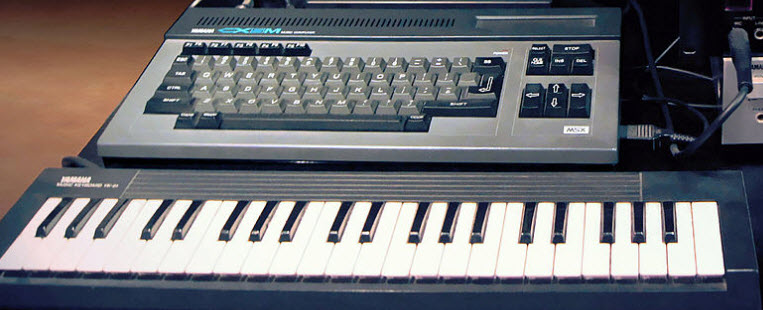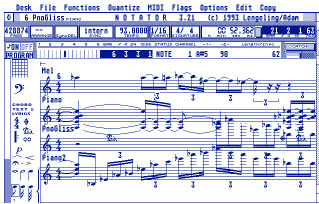The “WHYs” and the “HOWs” of Sound and (Electronic) Sound Design Part 2
music·@rofilm·
0.000 HBDThe “WHYs” and the “HOWs” of Sound and (Electronic) Sound Design Part 2
# <center>The “WHYs” and the “HOWs” of Sound and (Electronic) Sound Design</center> <center>**or: “Proving that Understanding Sound is a Renaissance Art” Part 2: Sound goes Digital**</center> <center> It all started with Yamaha´s double strike: The release of the first version of the famous DX7 in 1983 and the release of a Yamaha music computer, the CX5M. I urgently wanted an easier way to compose/produce – if you have read the first part you can imagine why – and bought the CX5M first.</center> <center> <center></center></center> <center>It worked with cartridges containing the software and included not only a capable FM synth with 8 voice polyphony, but also – hurrah!!! - an 8 channel sequencer/tracker. The sounds of the synthesizer could be tweaked, programmed with their parameters being visible on the screen (I used a small portable TV as a monitor) and even stored! And with these three absolutely new features (visibly and precisely programmable parameters, the possibility to store a programmed sound and the tracker functionality) I reached a new level of my composing/producing workflow.</center> <center> And two new fields of knowledge had appeared in my studio: digital sound engines (here FM/PM) and computer technology, IT. To use the new possibilities in a professional way it needed some more learning – again.</center> <center> Time to update our spiderweb therefore:</center> <center> <center></center></center> <center> When I said: “It started with Yamaha´s double strike” I was not completely right, because one year earlier in late 1982 something else had happened. Something, that would influence the world of producing music up to now: the MIDI standard was invented! And with that the necessity to learn something about transferring data, about how computers and other devices communicate.</center> <center> Next update of the spiderweb!</center> <center> <center></center></center> <center> And as the CX5M was equipped with MIDI I could think of a more comfortable and more powerful sequencer/tracker and using the CX5M only as a synth. </center> <center> There were two main products available: the commodore Amiga computer with adequate software and the Atari 1040 ST with a software package called Creator/Notator (which could be called the grand-grandfather of Apple´s Logic software).</center> <center> </center> <center> I decided to buy the Atari-Notator bundle, updated my studio with a keyboardless rack version of the DX7 (MIDI made it possible to use synths without keys of their own) and produced my music in uncomparably better technical quality and in a fraction of the time I had needed before.</center> <center> </center> <center> </center> <center> </center> <center> Everything went fine then. I consecutively added synth module after synth module, my studio got filled, my music got more and more colourful. I was quite happy with everything.</center> <center> </center> <center> Had I only known about the problems I would be running into!</center> <center> But let me leave this for part 3. Have a great and good time! Enjoy whatever you are doing! Rolf</center>